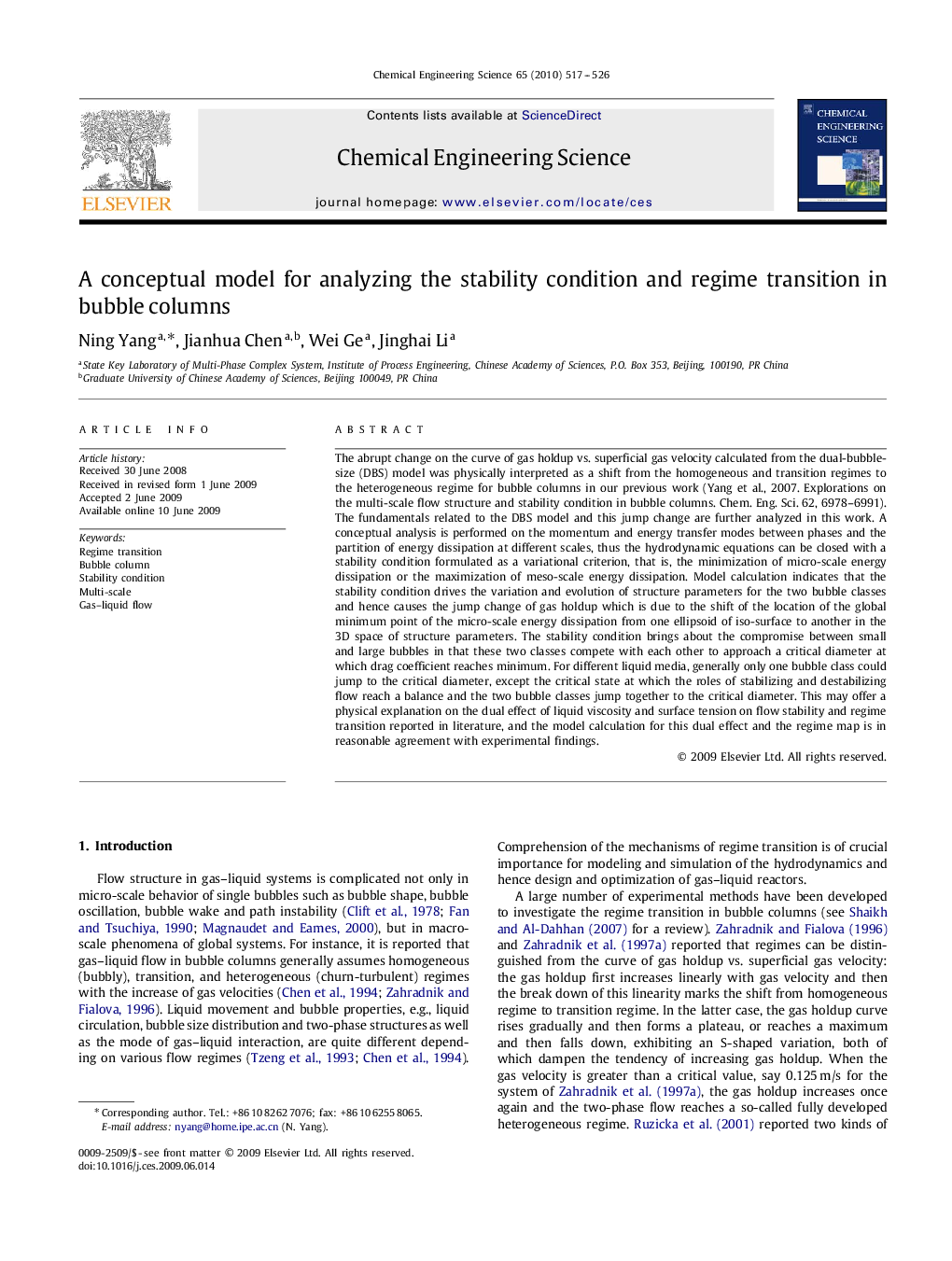| کد مقاله | کد نشریه | سال انتشار | مقاله انگلیسی | نسخه تمام متن |
|---|---|---|---|---|
| 157736 | 456980 | 2010 | 10 صفحه PDF | دانلود رایگان |

The abrupt change on the curve of gas holdup vs. superficial gas velocity calculated from the dual-bubble-size (DBS) model was physically interpreted as a shift from the homogeneous and transition regimes to the heterogeneous regime for bubble columns in our previous work (Yang et al., 2007. Explorations on the multi-scale flow structure and stability condition in bubble columns. Chem. Eng. Sci. 62, 6978–6991). The fundamentals related to the DBS model and this jump change are further analyzed in this work. A conceptual analysis is performed on the momentum and energy transfer modes between phases and the partition of energy dissipation at different scales, thus the hydrodynamic equations can be closed with a stability condition formulated as a variational criterion, that is, the minimization of micro-scale energy dissipation or the maximization of meso-scale energy dissipation. Model calculation indicates that the stability condition drives the variation and evolution of structure parameters for the two bubble classes and hence causes the jump change of gas holdup which is due to the shift of the location of the global minimum point of the micro-scale energy dissipation from one ellipsoid of iso-surface to another in the 3D space of structure parameters. The stability condition brings about the compromise between small and large bubbles in that these two classes compete with each other to approach a critical diameter at which drag coefficient reaches minimum. For different liquid media, generally only one bubble class could jump to the critical diameter, except the critical state at which the roles of stabilizing and destabilizing flow reach a balance and the two bubble classes jump together to the critical diameter. This may offer a physical explanation on the dual effect of liquid viscosity and surface tension on flow stability and regime transition reported in literature, and the model calculation for this dual effect and the regime map is in reasonable agreement with experimental findings.
Journal: Chemical Engineering Science - Volume 65, Issue 1, 1 January 2010, Pages 517–526